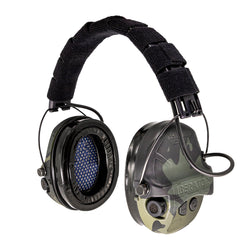At the Navy’s 250th birthday, it’s only natural to look at its humble beginnings during the Revolutionary War. Authorized by the Continental Congress on October 13, 1775, the service was originally known as the Continental Navy.
The Navy’s initial goal was to protect American trade and disrupt British supply lines, thereby hampering the enemy’s war effort. The forefathers realized the need for a Navy for the fledgling country, purchasing a few ships at the start while still relying on privately owned ships. These ships were converted from merchant vessels into armed privateers, staffed with volunteer crews.
While there weren’t very many naval battles during the Revolutionary War compared to modern conflicts, each battle still played a crucial role in the ultimate American victory. Below, we touch on a few of the most significant ones from throughout the war.

EARLY Naval Actions
Battle off Fairhaven
Less than three weeks after the outbreak of war at Lexington and Concord, the first naval battle of the Revolutionary War would be a patriot victory. The Battle off Fairhaven took place in Buzzards Bay, Massachusetts, on May 14–15, 1775. Not a traditional cannon battle, the patriots focused on recapturing private ships the British were attempting to seize and regaining supplies.
Battle of Machias
The next naval engagement occurred on June 12, 1775, in Machias, Maine. The far north town on the coast of Maine heavily relied on food coming into port, usually in exchange for the local lumber. This time, however, the merchants arrived with a British ship, the Margaretta, demanding that the British get the lumber for more ships in exchange for the food. That didn’t sit well with the patriot militia, and in the ensuing skirmish, the patriots took control of the ship and crew.
Battle of Valcour Island
In October 1776, the Battle of Valcour Island on Lake Champlain played a strategic role. While it wasn’t a patriot victory, it delayed the advancements of the British forces from Canada towards Fort Ticonderoga.
The American fleet was commanded by Benedict Arnold (before his later defection), who shrewdly prepared an ambush position in a narrow bay to neutralize the technologically superior British fleet’s firepower. While the ensuing fight was a tactical defeat for the Patriots, who lost most of their ships, Arnold’s defense and a brilliant nighttime retreat past British lines achieved the ultimate objective: delaying the British invasion from Canada.
BATTLES ABROAD
By 1777, the Navy had grown to 27 shipsbut remained vastly outnumbered by the British fleet of roughly 270 ships. Privateers—an estimated 2,000 ships with 10,000 men—augmented the American effort, capturing hundreds of British vessels. By war’s end, close to 1,500 British ships had been seized by American forces, including both the Continental Navy and privateers. French and Spanish involvement from 1779 further bolstered American efforts.

Flamborough Head, Yorkshire, England
On September 23, 1779, morale-boosting victory came at Flamborough Head, Yorkshire, England. John Paul Jones, aboard the Bonhomme Richard, faced the British HMS Serapis. Knowing he couldn’t win with cannons, Jones boarded the Serapis, resulting in four hours of bloody close-quarters combat. Ultimately, he captured the British vessel and crew, and sailed for friendly waters. That wouldn’t be Jones only battle in the war.
Caribbean Operations
Although the Continental Navy didn’t have any outright battles in the Caribbean Sea, French and Spanish forces tried to invade British territories in the West Indies. Privateers operated in the area to protect merchants and disrupt British trade. Further, the presence of France and Spain in the area forced the British to divert some of their attention from the American rebellion.
Battle of Chesapeake Bay
The culmination of naval action in the Revolutionary War was the Battle of Chesapeake Bay, also known as the Battle of the Capes. The French established a successful blockade, preventing British reinforcements from reaching Lord Cornwallis at Yorktown. On September 5, 1781, French forces intercepted the inbound British ships, blocking Cornwallis’s army from receiving reinforcements or retreating.
This was the final straw for the British forces due to the lack the naval support they needed and Lord Cornwallis was forced to surrender on October 19, 1781. The Battle of Chesapeake Bay is widely considered a decisive engagement in securing American independence.

AFTER Independence
After the Revolutionary War, the Continental Navy fell into neglect and was largely disbanded. It would not be until 1794 that the United States established a standing naval service, laying the foundation for the modern U.S. Navy.
This article is part of our series honoring the U.S. Navy’s 250th birthday—see the other stories in the series for more history and insights.
Origins of the U.S. Navy
- 13 October 1775: The Birth of a Sea Power.
- John Paul Jones: Father of America’s Navy
- The History of the U.S. Navy’s First Six Frigates
- U.S. Naval Battles of the Revolutionary War
Navy Pioneers & Heroes
- History of U.S. Naval Infantry
- Forged in Fire: The Origins of the Navy SEALS
- Unsung Heroes of the U.S. Navy
Naval Hardware
Honoring the Legacy









